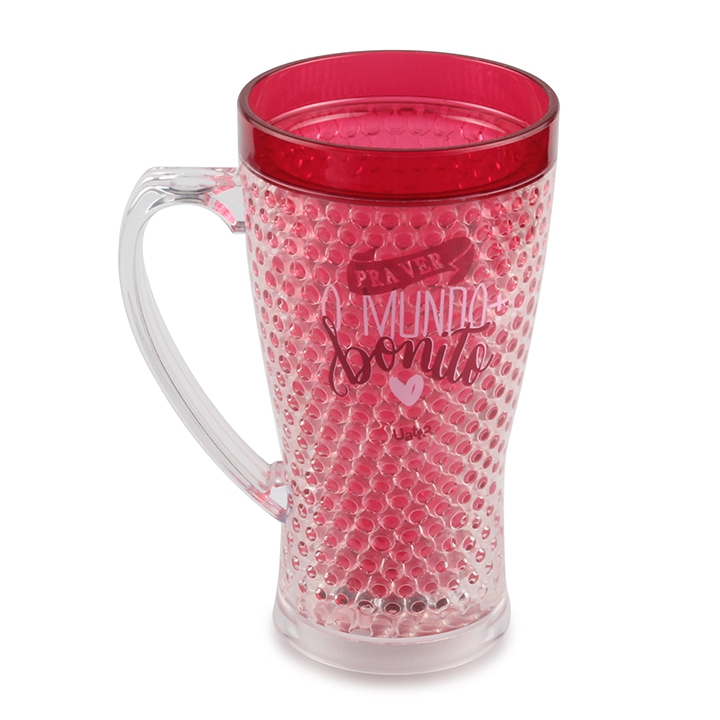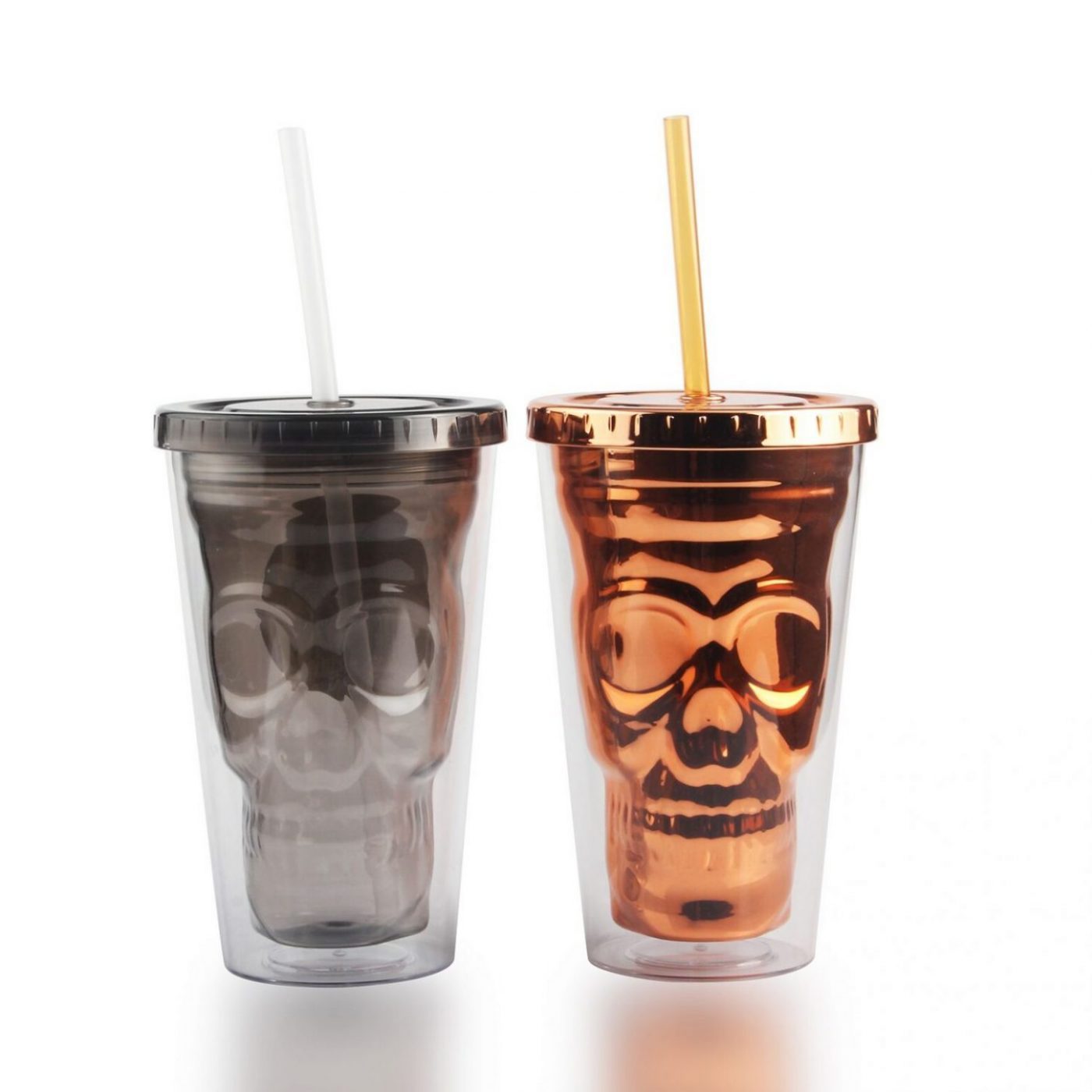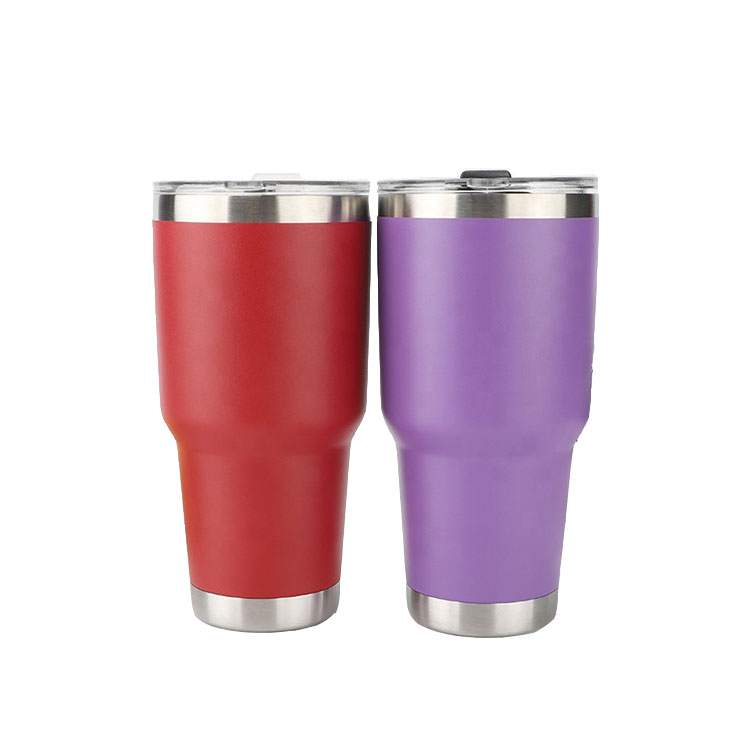Do you know what material the cups you use are made of? Most people probably don’t notice this. Before that, the first thing that comes to your mind is the size of your cup. Then there’s color and design. But there are many factors to consider when choosing the plastic tumbler cups. Before you finally choose the beautiful cup you see, ask yourself these questions: Is it durable? Is the price affordable? Is it easy to carry? Will it hold heat? Is it dishwasher or microwave safe? And these issues are undoubtedly closely related to the material of the cup. We might as well start with the characteristics of the material itself. Find out what are the pros and cons of cups made of different materials. To help you judge, what kind of material cup is your purchase target. Common cup materials include the following: ceramic, glass, stainless steel, paper, plastic.
Table of Contents
TogglePlastic Cups
Plastic cups are a common form of cup. Compared with cups of other materials, the development of plastic cups has come a long way. This makes the styles of plastic cups more diverse. Some are simple and inexpensive, others are more refined.
1.1 Advantages of plastic cups
- Not breakable. Unlike brittle ceramics and glass, plastic is more resistant to drops and will not break with normal drops. It is a great choice for large parties such as pool parties, birthday parties, etc. You don’t have to worry about ruining the party vibe with a broken cup.
- Light weight. Compared with other cups of the same capacity, plastic cups are significantly lighter in weight. That means it’s portable and not a burden. You can choose to use it while riding, climbing or traveling.
- Innovative design. In recent years, the emergence of double-layer plastic insulated cups has broken the stereotype of traditional plastic cups. Plastic cups have begun to have a certain heat preservation and cold preservation effect. At the same time, it does not feel hot when taking the cup that holds the hot drink. Of course, if you like, we can also add various decorations between the double walls.
1.2 Disadvantages of plastic cups
- Change the liquid flavor. Plastic absorbs taste and odor. So you need to keep the drink in the cup the same. Otherwise, your next drink may carry traces of whatever was in the previous cup. Plastic cups seem to change the taste and smell of drinks even with cold liquids.
- Not environmentally friendly. Plastic doesn’t corrode, and it takes hundreds of years to break down into the elements. This means that plastics are not environmentally friendly and can be a huge burden on our environment.

Ceramic Cups
Ceramic cups are the most common cups we choose at home, school or office. We even pour bottled water or beverages into ceramic cups and add ice cubes. Or brew coffee, milk tea in a ceramic cup. Drinks seem more delicious in ceramic cups. I think this may be related to the material characteristics of the ceramic itself that we will mention next.
2.1 Advantages of ceramic cups
- Neutral material. Ceramic is a neutral material that will not absorb any liquids or leak anything. Perfectly retains the taste of the liquid itself. For example, your favorite coffee, still strong, pure and delicious in a ceramic cup. At the same time, cups using ceramic can retain the heat of the liquid in the cup for a longer time. So, here’s a little tip to preheat the ceramic cup with hot water before adding coffee or tea.
- Microwave and dishwasher friendly. Because ceramic is tough, you can put it in the microwave without worrying about it breaking. When heating, the ceramic cup can distribute the heat evenly. At the same time, this toughness also makes the cups easy to clean and dishwasher friendly.
2.2 Disadvantages of ceramic cups
- Easy to be dyed. Special attention is required when using ceramic mugs to serve beverages. In the face of colored liquids such as Fanta and coffee, the ceramic material is easy to be dyed, which affects the appearance.
- Fragile. Compared to the plastic tumbler cups mentioned above, ceramic cups are significantly more fragile. At the same time, shards of ceramic can cut hands if not handled carefully. Therefore, it is not recommended for children or as a carry-on travel mug.

Glass Cups
Cups use clear glass are stylish in appearance, and they allow you to see the layers of liquids inside, such as coffee and champagne. Therefore, glass cups are often used in important occasions such as weddings and dinner parties.
3.1 Advantages of glass cups
- Non-porous material. The glass is non-porous and impermeable to water. Therefore, there is no interaction between the glass and the liquid in the glass to affect the flavor. Glass cups keep water fresh and pure for a long time without the risk of BPA and other chemical contamination.
- Environmentally friendly and recyclable. Glass is 100% recyclable and can be recycled endlessly without loss of quality or purity. A single glass can go from a recycling bin to a store shelf in as little as 30 days. An estimated 80% of recycled glass containers are made into new glass cups.
3.2 Disadvantages of glass cups
- Fragile. Glass is more fragile than plastic and ceramics. It can break when dropped, placed in the dishwasher, or exposed to extremely high temperatures beyond what it can handle. So, try to use durable glass types like tempered glass or borosilicate glass.
- No insulation. Glass cups don’t hold heat very well. In other words, your hot drink will get cold quickly, and your cold drink will get hot quickly. Also, there is a risk of burns by touching a glass with a hot drink. For starters, such glass cups present challenges. The plastic insulated mug with handle does not have such a problem.
Paper Cups
The history of paper cups can be traced back to the 1918 flu epidemic in the United States. These cups are single-use, thus preventing infection and promoting public health. Today, this paper cup can still be seen in hospitals, commercial centers, school cafeterias, offices and parties. Paper cups are made of paper or cardboard. Afterwards, they are laminated with thin polyethylene sheets and the bottom is sealed with a disc.
4.1 Advantages of paper cups
- Environmentally friendly and recyclable. Nowadays, people pay more and more attention to environmental protection. This is also reflected in cafes and fast food restaurants, similar to Starbucks and KFC. Takeaway beverages and to-go coffee cups are gradually adopting paper materials. Paper is a single-use material, therefore, it breaks down easily. Recycling paper is easy. Meanwhile, pulp is formed from paper and water. This pulp can be further used to make new cups. This means that the paper cups are recyclable and do not cause any harm to the environment.
- Safety. Compared to plastic tumbler cups, paper cups are safer. Paper is made from trees, so it usually does not contain any toxic substances. And the paper itself does not chemically react with any internal liquid. So whether you’re drinking hot or cold drinks from these cups, it’s perfectly safe.
- Light weight. People prefer to use paper cups because of their light weight. You can take it with you without having to bear too much weight.
4.2 Disadvantages of paper cups
- No insulation. Paper cups are not very good insulators. It is difficult to maintain the temperature of the liquid in the cup, whether it is hot or cold.
- Poor user experience. In terms of experience, paper cups are disposable. This means they are temporary and can leave you feeling like you are in an unfamiliar and uncomfortable environment. In addition, paper cups are thin. If you touch a paper cup after pouring a hot drink, there’s a good chance you could burn your hands. It’s also fragile and can spill out in the slightest accident.
Stainless Steel Cups
In recent years, stainless steel cups have become the choice of more and more consumers. Even though it is more expensive, its reusability is much higher than that of disposable paper and plastic cups. Likewise, the use of stainless steel cups can improve the quality of life.
5.1 Advantages of stainless steel cups
- Strong practicability. Stainless steel uses iron mixed with carbon and chromium. This combination resists rusting and has increased strength, making it difficult to break. The stainless steel tumbler is wear-resistant, drop-resistant and corrosion-resistant. If used properly, it can even stay with you for a lifetime. Stainless steel is a good insulator, and the cups made have long-term heat preservation and cold preservation performance.
- Wide range of uses. The stainless steel cup can be used as a thermos, or a travel mug, which is suitable for most car cup holder. Most stainless steel mugs come with spill-proof lids and are suitable for use on the go to work, school, or on the go.
5.2 Disadvantages of stainless steel cups
- There are inferior products. However, the current stainless steel cups on the market are mixed, so pay attention to distinguish them. Buy a good quality double wall insulated 304 stainless steel cup.
- It cannot be heated in a microwave oven. In fact, stainless steel reflects microwaves. When the waves bounce inside the microwave, the energy grows exponentially and causes sparks and fires.

Finding the best cup material is as important as what you decide to drink. From the descriptions of these materials above, I believe you already know everything about the different materials of the cup. And the corresponding characteristics of plastic insulated cups, ceramic cups, glass cups, paper cups and stainless steel cups. Then according to your own situation, you can decide which best suits your purchasing target.


